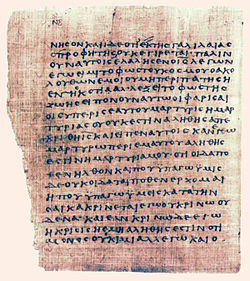 Narrative criticism is a form of literary criticism applied to biblical studies that developed in the past few decades since the 1970s. As a method of approach, it focuses more on stories, events, people, discourses and settings. According to A Dictionary of the Bible, "The main thesis is that readers (e.g. of the gospels) should read the narratives and respond to them as the authors hoped." The previous approaches to biblical criticism, viz. form, redaction, historical, and textual are considered to have become obsolete and effecting no conclusive results. According to Mark W. G. Stibbe,
Narrative criticism is a form of literary criticism applied to biblical studies that developed in the past few decades since the 1970s. As a method of approach, it focuses more on stories, events, people, discourses and settings. According to A Dictionary of the Bible, "The main thesis is that readers (e.g. of the gospels) should read the narratives and respond to them as the authors hoped." The previous approaches to biblical criticism, viz. form, redaction, historical, and textual are considered to have become obsolete and effecting no conclusive results. According to Mark W. G. Stibbe,Until the late 1970s, the traditional methods for the study of the gospels and Acts were form criticism, source criticism, historical criticism, tradition history, redaction criticism, and textual criticism.... ...traditional methods of interpretation were more concerned with what lay behind NT narratives than with their form and their literary, artistic features....
A change began to occur most noticeably in the 1980s, when two books were published on Mark as Story (Rhoads and Michie, 1982; Best, 1983); one on Matthew as Story (Kingsbury, 1986), one on The Narrative Unity of Luke-Acts (Tannehill, 1986), and one on the Anatomy of the Fourth Gospel (Culpepper, 1983). Each of these works, and a number of lesser-known books and articles... took up the challenge of looking at the final form of the gospels and Acts in order to highlight those narrative dynamics which traditional methods had neglected.[1]
According to John David Punch, "the pendulum has swung, for literary criticism looks at the text as a whole with virtually no interest in sources, traditions, or redactional material."[2]
Christopher T. Paris observes, "Narrative criticism embraces the textual unity of canonical criticism while historical criticism holds fast to textual divisions that arose from multiple sources and editors. Narrative criticism admits the existence of sources and redactions but chooses to focus on the artistic weaving of these materials into a sustained narrative picture." [3]
The narrative critic tries to first establish the literary aspect and genre of the text (whether it is fiction or non-fiction, prose or poetry?. Then, he goes on to analyse the setting, plot, theme, characters, story elements, etc. His goal is to understand what the narrator (author) of the narrative really wanted to communicate and how he accomplishes it.
NOTES
1. Mark W. G. Stibbe, John as Storyteller: Narrative Criticism and the Fourth Gospel (Cambridge University Press, 1992), p5.
2. John David Punch, The Pericope Adulterae: Theories of Insertion & Omission, Doctoral Dissertation submitted to Radboud University Nijmegen, 19 April 2010.
3. Christopher T. Paris, Narrative Obtrusion in the Hebrew Bible, PhD Dissertation submitted to Graduate School of Vanderbilt University, May 2012. p4.






0 comments:
Post a Comment